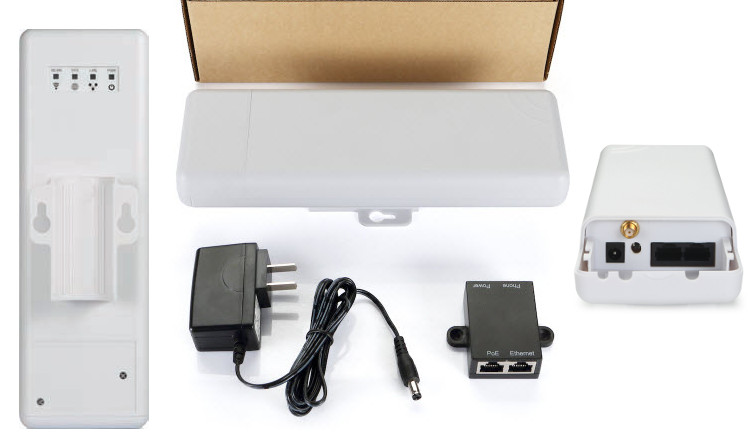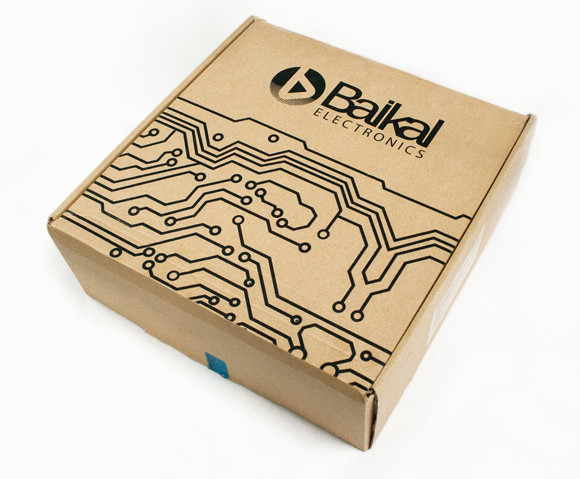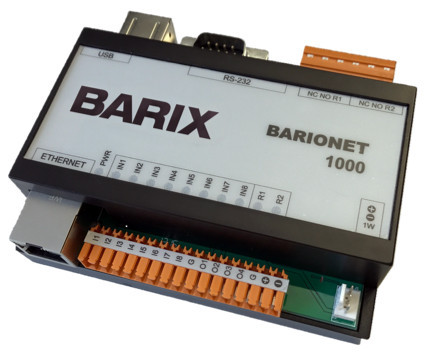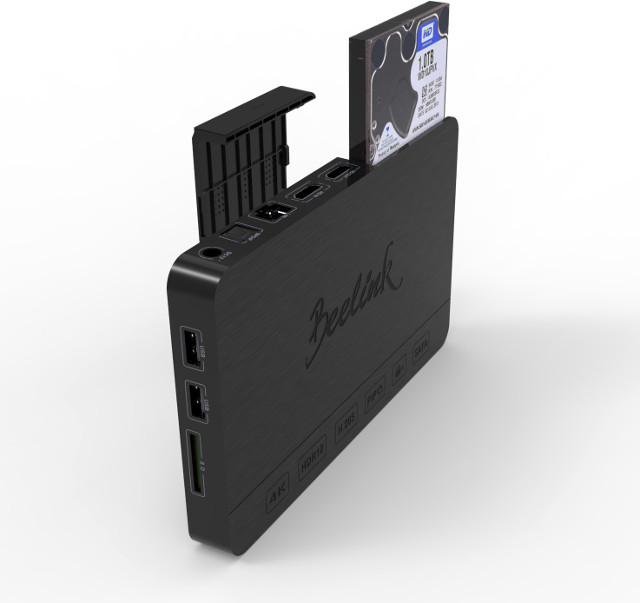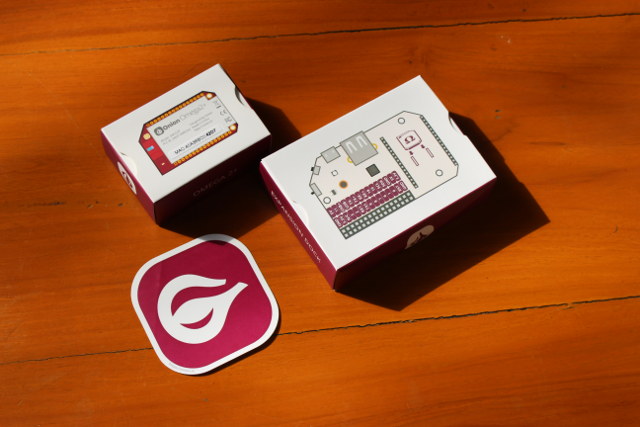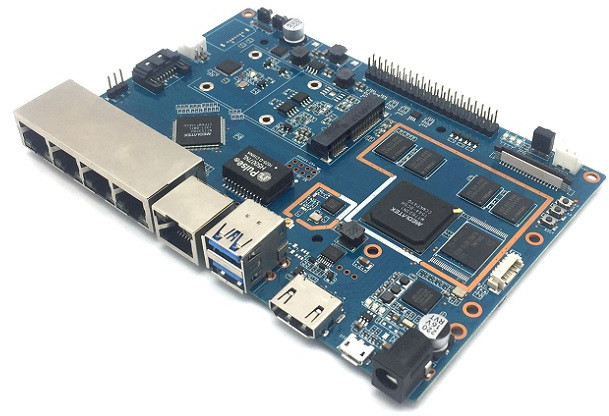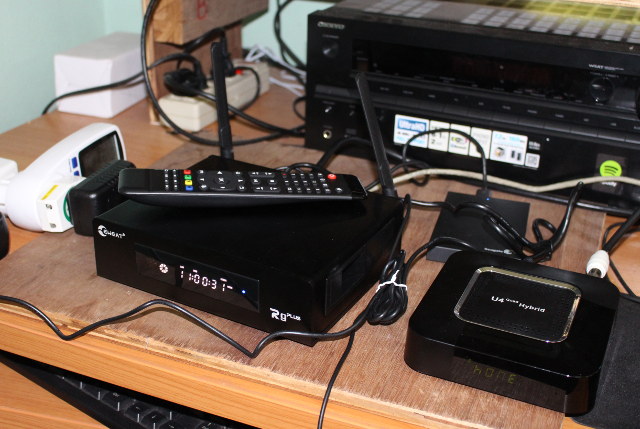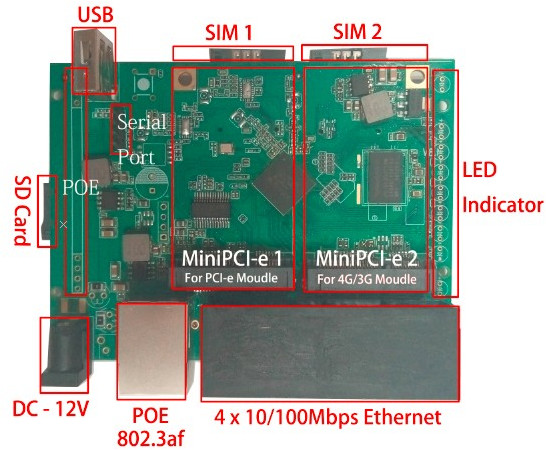Dragino Technology, a Shenzhen based startup focusing on the Internet of Things, had already designed LoRa shields & Hats for Arduino & Raspberry Pi boards which can be useful for LoRa nodes, but the company has now launched Dragino OLG01 LoRa gateway running OpenWrt that communicates with nodes over LoRa, and to the cloud using WiFi, Ethernet, or 3G/4G. Dragino OLG01 specifications: WiSoC – Atheros AR9331 MIPS processor @ 400MHz System Memory – 64MB RAM Storage – 16MB flash MCU – Atmel ATMega328P AVR MCU with 32KB flash, 2KB SRAM Connectivity 802.11 b/g/n WiFi with antenna 2x 10/100M Ethernet with support for passive PoE Optional 3G/4G module connected to internal USB socket (TBC) Semtech SX1276/78 LoRa wireless module + SMA connector (antenna not provided) up to 5~10 km range USB – 1x USB 2.0 host port Power Supply – 12V DC power jack or PoE Three models are offered with […]
Baikal T1 BFK 1.6 MIPS Development Board Tested with OpenWrt
Baikal Electronics is a Russian fabless semiconductor company specializing in ARM and MIPS-based SoC, and we’ve already covered their Baikal T1 MIPS SoC announcement, as well as Tavolga Terminal TP-T22BT Debian 8 All-in-One Computer based on the processor. The company also have Baikal T1 BFK 1.6 development board, which does not appear to be publicly available yet, but one member of Habrahabr.ru forums got hold of one sample, and tested the OpenWrt SDK in Debian 8 host computer. First, we’ll have a look at the hardware they received. I don’t have the full specs of the board, but we’ll learn a little more below, in the meantime we can see two USB ports, Gigabit Ethernet ports, a 10GbE SFP cage, an mPCIe slot (I think), and two DB9 connector, as well as a bunch of other headers and connectors with SATA, GPIO, UART, I2C, SPI… I’ve then downloaded Baikal T1 BSP […]
Barionet 1000 DIN Rail Programmable I/O Controller Runs OpenWrt
Barix, a Swiss company specializing IP- based communications and control technology, has introduced a new Barionet programmable I/O controller with Barionet 1000, the first model of the company to run Linux, and in this case OpenWrt, and to offer WiFi and USB connectivity. Barionet 1000 specifications: Processor – Undisclosed System Memory – 64MB RAM Storage – 16MB flash Connectivity – 10/100M Ethernet, Wi-Fi 802.11 b/g/n; IPv4 & IPv6 support. USB – 2x USB Host Ports Serial – 1x DB9 RS-232 serial port User programmable I/Os 2x relay outputs (30 VDC max, 5 A) 4x open collector digital outputs (4 x 24 VDC, 0.3 A) 8x contact closure inputs (0 – 15 V), including 4x 12-bit analog inputs (0 – 15 V) 1-wire interface for 18DS20 temperature sensor Misc – 11 LED status indicators Power Supply – 9 to 30V DC (2.5 Watts max) Dimensions – 103mm x 85mm x 31mm; […]
Beelink SEA TV Box with Realtek RTD1295, HDMI Input and Internal SATA Bay Sells for $105 and Up
I’ve already reviewed two Android TV boxes powered by Realtek RTD1295 processor, namely Zidoo X9S and EWEAT R9 Plus. They are quite interesting devices as beside supporting video & audio playback nicely (minus 4K H.264 @ 30fps), they also serve as a personal NAS thanks to their SATA interface and OpenWrt operating system running alongside Android, as well as a HDMI recorder and streamer thanks to the HDMI input. Zidoo firmware is a little better, but it only comes with external SATA, while EWEAT R9 Plus comes with a neat internal 3.5″ SATA bay inside a metal case. The downside is that it’s quite expensive at $200 shipped. If you’d like a Realtek RTD1295 solution with a SATA bay, but would like something more cost effective, Beelink SEA TV box with might be for you. Beelink SEA specifications: SoC – Realtek RTD1295 quad core ARM Cortex-A53 processor @ 1.4 GHz […]
Getting Started with Onion Omega2+ LEDE WiFi IoT Board and Expansion Dock
Onion Omega2 LEDE (OpenWrt fork) WiFi board is powered by Mediatek MT7688 MIPS SoC, targets IoT projects, and sells for as low as $5. There are actually two versions: Omega2 with 64MB RAM, 16MB flash, and Omega2+ with 128MB RAM, 32MB flash and a micro SD slot. Onion sent me the latter for review, together with an expansion dock that allows powering up the board though USB , and adds a USB host port, an RGB LED, buttons, and access to GPIO via a female header. In this quick start guide, I’ll start by taking some unboxing pictures, and then report my experience following the documentation to configure the board, blink the RGB LED, and control a LED on a breadboard using a GPIO from the header. Onion Omega2+ Unboxing I received the two boards in their respective package, and which are both stored in anti-static bags. Let’s check Onion […]
Banana Pi BPI-R2 Router Board Powered by Mediatek MT7623A Quad Core Processor Comes with 5 GbE Ports, SATA, and More
Banana Pi BPI-R1 board was launched in 2014 with 5 Gigabit Ethernet ports, SATA interfaces, and powered by Allwinner A20 board. SinoVoip is now about to launch an updated version – Banana Pi BPI-R2 – powered by Mediatek MT7623A quad-core Cortex A7 processor with 2GB RAM, 8GB flash, 5 Gigabit Ethernet ports, up to 2 SATA connectors, mPCIe, USB 3.0, and more. BPI-R2 board specifications: SoC – MediaTek MT7623A quad-core ARM Cortex-A7 processor @ up to 1.3 GHz with Mali 450 MP4 GPU System Memory – 2GB DDR3 SDRAM Storage – 8GB eMMC flash (option 16/32/64GB), up to 2x SATA interfaces, micro SD slot up to 256GB expansion Video Output / Display I/F – HDMI 1.4 up to 1920×1200, MIPI DSI connector Connectivity – 5x 10/100/1000 Mb Ethernet port (via MT7530), Bluetooth 4.1 & dual band 802.11b/g/n WiFi (MT6625L module) USB – 2x USB 3.0 ports, 1x micro USB 2.0 […]
Eweat R9 Plus TV Box Review Part 2 – Android, OpenWrt, and HDMI Recording
Eweat R9 Plus is a device powered by Realtek RTD1295 SoC combining main functions: Android 6.0 TV box, OpenWrt NAS/router, and HDMI recorder thanks to its HDMI input port. It competes directly with Zidoo X9S which has the same features, except while Zidoo X9S has no internal SATA bay and your 2.5″ hard drive just hang outside the box, Eweat R9 Plus comes with an internal 3.5″ SATA bay that makes it much neater on your furniture… We’ve already seen that in the first part for review “Eweat R9 Plus unboxing and teardown“, and I was impressed by the hardware, but the software is even more important, and that’s what I’m going to check out in the second and final part of this review. First Boot, First Impressions and Setup. I’ve first inserted a 1TB 3.5″ SATA drive in the device, and then I connected an extra USB 3.0 hard […]
Samlinking D240 Mediatek MT7620A Router Boards Support Two 4G LTE mini PCIe Modules, PoE for $38 and Up
Samlinking Technologies, a manufacturer of 4G WiFi integrated solution based in Shenzhen, has launched D240 router board powered by Mediatek MT7620A MIPS processor with 128MB RAM, 64 MB flash, four Fast Ethernet LAN ports, one Fast Ethernet WAN port with PoE, as well as two PCIe slots accepting 4G LTE modems.Three Samlinking D240 models are available with D240A1, D240A2, and D240A3 with different combination of LTE module, and 802.11 b/g/n and/or 802.11ac connectivity. SoC – Mediatek MTK7620A MIPS processor @ 580MHz System Memory – 128MB Storage – 64MB flash + micro SD card slot Connectivity 802.11 b/g/n/ac up to 300, or 300 + 867 Mbps depending on model+ 2 u.FL connectors 5x 100 Mbps Ethernet port (RJ45) with 4 LAN ports, 1 WAN port with PoE 802.3af 2x PCIe slot with LTE Cat3 to Cat 6 modem cards 2x SIM card slots Serial – 1x 4-pin header USB – 1x […]


